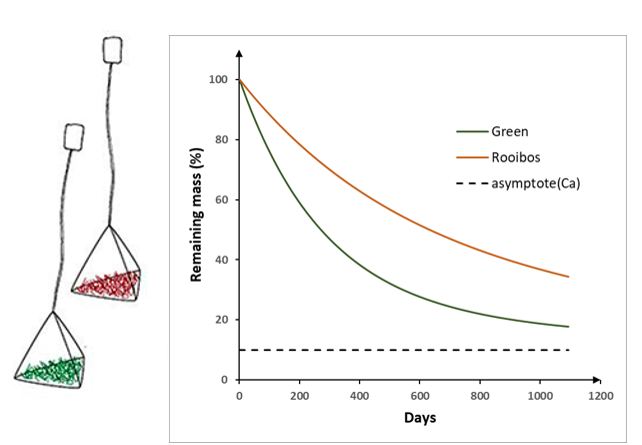The original idea to use Tea Bags as a standardized matrix for decomposition was published by Joost Keuskamp (Keuskamp et al. 2013). Method has been adapted by Ika Djukic (Djukic et al., 2018; Halbritter et al., 2020) to match global and long-term applications. The principle and operation of the method is simple: the commercial available tea bags (green and rooibos tea) are placed in the ground and mass loss is followed through time. If the tea is preserved (minimal mass loss) then the ecosystem represents an excellent environment for carbon preservation. The TeaComposition initiative was designed as a widely applicable approach requiring minimal recourses and workload (10 person days over three years).

This method does not give the actual number for C-losses and decomposition rates, since the tea is not equivalent to the real local litter, but can be related to local rates (e.g. by simultaneous incubation of native litter) and modelling. Therefore, it would be of advantage installing the tea bags together whit the local litter bags or using the sites for the installation with already existing data on native litter decomposition.
